|
The book is dedicated to my family. After all, it was fatherhood that inspired the story line, characters, and journey.
0 Comments
Certain books really sparked my fascination with Central Asia. One is Rudyard Kipling’s “Kim,” which I read as a boy. Another is Lutz Kleveman’s “The New Great Game,” which I read in grad school…
Back then, I never would have dreamt that Kleveman would eventually endorse my own book by referencing Kipling! I am honored beyond words by this praise. “Chaturanga” has truly been an amazing journey! “Wherever he looked, eyes of all colors – hazel, olive, indigo, and ash gray – stared back. Kashgar truly was a crossroads of culture, Patrick marveled.”
(from Chaturanga) Below is a resident of western China. His green eyes reveal a European heritage -- perhaps Roman or Greek from millennia earlier. "Hugging him on their final night together, Grandpa had said, 'You are an Eaton, Patrick, which means you must think and see for yourself. You come from a long line of explorers, but you must never forget that you are your own man."'
- from Chaturanga The book gets its name from an ancient strategy game that originated in India in the 5th century. The rules are complex, murky, and continually evolving…. making the game of “Chaturanga” an excellent analogy for the history and geopolitics of Central Asia.
For Immediate Release
Monday, January 25, 2016 INTRODUCING “CHATURANGA” – A YOUNG ADULT NOVEL ABOUT THE SILK ROAD Grand Junction, CO, January 25, 2016 – Andrew C. Katen has announced the February 1, 2016, release of his new book, Chaturanga, a young adult novel that entertains while it educates readers about one of the oldest yet least understood regions of the world – Central Asia. Chaturanga centers around Patrick Eaton, a fourteen-year-old who has been raised on the legendary tales of his forefathers, each intrepid explorers in their own time. As an American boy in the twenty-first century, Patrick doubts whether he will have the opportunity to follow in their footsteps. The surprising opportunity to accompany his geologist father on a business trip to Azerbaijan leads to an adventure that encompasses a secret journal, codes, political intrigue, buried treasures, and family legacies. The novel has already received praise from experts in the fields of Silk Road history, geopolitics, and energy. Francis O’Donnell, Emmy-nominated filmmaker of the PBS documentary In the Footsteps of Marco Polo, describes Chaturanga as a book that is “full of wanderlust and adventure, one that Marco Polo himself would have recognized and enjoyed.” “[Chaturanga] is written with panache and great scope,” adds Lutz Kleveman, author of The New Great Game. “Like Kipling’s Kim, it takes the reader on a journey through little-known Central Asia, a part of the world still as fascinating as it was 150 years ago.” Steven Gardner, 2015 President of the Society for Mining, Metallurgy, and Exploration, says, “[This book] will appeal not only to the young adult audience, but adults as well… Katen’s perception of both geopolitical history and current events will help readers understand what is going on in today’s world.” While the subject matter of Chaturanga reflects Katen’s professional interests, it was ultimately fatherhood that inspired him to write a young adult novel. “As a parent, I wanted to create a story that’s fun, thought-provoking, and relevant – and without violence, profanity, or adult themes. I wrote a book that I would have enjoyed as a teen, and which I look forward to sharing with my own children.” Andrew C. Katen is an educator, geopolitical analyst, and geologist who has taught middle school and college. He has published and presented on topics related to geopolitics and risk management. Katen holds an M.S. in national security studies and B.S. degrees in geology and biology. He lives with his wife and two children in Colorado. Chaturanga is his first novel. For more information about Chaturanga and its author, please visit www.chaturangabook.com/press-kit or contact Andrew C. Katen at [email protected]. Chaturanga will be available for purchase in paperback or e-book format at Amazon.com on February 1, 2016. ### “In Chaturanga, [Katen] makes learning fun… [his book] is full of wanderlust and adventure, one that Marco Polo himself would have recognized and enjoyed.” - Francis O'Donnell, Artist, Author, Explorer & Emmy Nominated filmmaker of the PBS documentary "In the Footsteps of Marco Polo" Chaturanga will be available for purchase in paperback and e-book format at Amazon.com on February 1, 2016. Check out the book trailer below! With just two weeks until "Chaturanga" is released (Feb. 1), I am feeling very flattered by the advance praise given the book by experts in their respective fields. Thanks very much to all of you!
"In 'Chaturanga', Andrew C. Katen makes learning fun, he boils down very complex issues, geo - politics, ancient and modern history, international corporate strategy and more in a very digestible manner. Told through the eyes of his young protagonist it is full of wanderlust and adventure, one that Marco Polo himself would have recognized and enjoyed. The genius in it for me is his use of oil as the linchpin of his book, once trade goods such as silk, spices and precious gems animated the Silkroad, today oil is the lubricant reanimating that ancient route and is the Axis Mundi upon which the whole world now turns!" - Francis O'Donnell, Artist, Author, Explorer & Emmy Nominated filmmaker of the PBS documentary "In the Footsteps of Marco Polo" "What a great story. And, what a great way to encourage the interest of teenagers in history, politics, current events, geography, and economics." - Larry Eubanks, Ph.D., Associate Professor of Economics University of Colorado at Colorado Springs “This novel tells an exciting story through a historical, cultural, political and contemporary narrative that will captivate, educate and stimulate young adults. The writing is fluid, informed, and imaginative. ” – Hussein A. Amery, Ph.D., Colorado School of Mines, Division of Liberal Arts and International Studies "... an entertaining, heartwarming, hair-rasing, inspirational and educational journey into the world of energy exploration and intriguing geopolitics. Well done! I did not want it to end." - Stephen Doyle, President, BtuBaron LLC "...a delightful romp, an epic adventure. Engrossing, imaginative, and beautifully wrought, it is a tale of legend, lore and discovery that, like the best of books, will educate, fascinate, and resonate. Katen's book is one that you will keep, share, and one day, want your own children to read." - Troy Matthew Carnes, teacher and author of RASPUTIN'S LEGACY "Andrew Katen's 'Chaturanga' is a very enjoyable novel, written with panache and great scope. Like Kipling’s ‘Kim’, it takes the reader on a journey through little-known Central Asia, a part of the world still as fascinating as it was 150 years ago.”
– Lutz Kleveman author of THE NEW GREAT GAME "'Chaturanga' will appeal not only to the young adult audience, but adults as well. Energy politics is hard for many to grasp, especially if they have not had to worry about where their next tank of gas is coming from or whether their lights will come on. Andrew Katen's perception of both geopolitical history and current events will help readers understand what is going on in today’s world." - J. Steven Gardner, PE, SME-RM, 2015 President, SOCIETY FOR MINING, METALLURGY, AND EXPLORATION "I read Chaturanga and thoroughly enjoyed every bit of it . . . While the story is fiction, the novel has useful and educational information about Central Asia, including geology, archeology, history, culture, language, people, and the environment. Even names of places and people have helpful pronunciation guides. Chaturanga is an excellent novel for Junior and Senior level high school students and young adults.” - Verner C. Johnson, Ph.D. Professional Geologist Syria is barely mentioned in Chaturanga. The same goes for the wider Middle East (with the exceptions of Turkey and Iran). After all, Chaturanga is the story of an American boy’s journey through Central Asia. So, what can the book teach the reader about the situation in Syria? As he ventures along the Silk Road, Patrick (the main character) develops an understanding of the geopolitics of Central Asia that is helpful for making sense of events elsewhere (including Syria). Essentially, he learns that while history rhymes, geography endures. If world politics can be thought of as a grand strategic “game,” geography is the board on which it is played. While the players and rules of this game can change, geography does not – it is the same today as it was in Alexander the Great's time. Through this lens, Patrick would likely identify at least three factors which contribute to the conflict in Syria. First, he would take note of the geopolitical relationship of Syria to Central Asia. In this light, he might view the interventions by great powers in Syria as part of a global competition for control over Central Asia. Second, having learned that artificial, externally imposed political borders have led to conflicts in Central Asia, Patrick would evaluate Syria’s modern borders to understand whether similar causes are at work there. Third, Patrick might recall that the threat of radical Islam has often been cited by regimes as justification for expanding authority over the people of Central Asia. With this perspective in mind, Patrick would no doubt search for evidence of a similar process at work in Syria. Over the course of his summer abroad, Patrick learns that Central Asia has historically been regarded as the center of the world’s “grand strategic chessboard.” From Alexander to Joseph Stalin, conquerors have long coveted Central Asia for its location and abundance of natural resources. In fact, more than a century ago, the founding father of geopolitics, Halford Mackinder, identified Central Asia as “the geographic pivot of history.” He theorized that powers which occupy this region can easily “pivot” – or project their influence – into Europe, the Middle East, Africa or Asia. In fact, Mackinder’s “pivot” theory proved so influential that it became the backbone of “containment” – the strategy adopted by the United States (and its allies) during the Cold War to surround the Soviet Union and prevent the spread of communism. Patrick learns that Central Asia’s importance continues today – not only for its strategic location, but also for its gigantic oil and gas reserves, as well the spider web of pipelines necessary for bringing them to market. As such, Patrick would likely view Syria as part of a large ring of conflict that surrounds Central Asia. Mackinder referred to this ring as the “Inner Crescent” (see map below). During the “Great Game” (1700s and 1800s), Great Britain and Imperial Russia waged a cold war over control of Central Asia, during which Britain tried to prevent Imperial Russia from occupying the “pivot area.” Ultimately, however, Russia was successful at conquering much of this region. A century later, the United States tried to keep the Soviet Union from pivoting out of Central Asia. The result was another Cold War – this time along the Inner Crescent (in places like Europe, the Middle East, Afghanistan, Vietnam, and Korea). By understanding that Syria lies within the Inner Crescent, Patrick might conclude that the conflict there is the result of history rhyming. The growing conflicts and interventions by great powers in Syria – and throughout the Inner Crescent (e.g. the Ukraine, eastern Turkey, Iraq, Afghanistan, Pakistan, the South China Sea) – suggest another “cold war” may be unfolding. Reemerging land powers like Russia and China have repeatedly stated they have significant interests in Central Asia. As they expand their influence into “the geographic pivot of history,” the surrounding Inner Crescent may again become a critical “line in the sand” for the world’s sea power (the United States) to contain them. During his travels, Patrick also discovers what happens when political borders do not reflect historical ethnic and tribal boundaries. For example, he learns that Central Asia’s borders are relatively recent – they were drawn in the 1920s by Joseph Stalin, the most infamous Soviet Premier. Stalin intentionally created these borders to split tribal lands and alliances, thereby minimizing the possibility that they could unify in opposition to Moscow. During this process, entire communities were often physically relocated; other times, a political border was simply drawn between neighbors. But since the collapse of the Soviet Union in 1991, ancient claims over ethnic homelands are reemerging. In places like the Fergana Valley, these centuries-old entitlements to farmland and water are already causing strife among valley residents. Eventually, these disputes could bring the neighboring Central Asian states of Uzbekistan, Kyrgyzstan, and Tajikistan into conflict. By understanding the friction which results from artificially imposed borders, Patrick would probably detect a similar cause-and-effect relationship in Syria. For example, he would discover that Syria’s modern borders were established by the Sykes-Picot Agreement during the final years of World War I. This secret arrangement among the victors of World War I (Great Britain, France, and Russia) divided the lands that were formerly occupied by their enemy (the Ottoman Empire). Britain claimed parts of Palestine, Jordan and Iraq. France was awarded Syria, parts of Turkey and Iraq, and Lebanon. And Russia won control over Istanbul, the Turkish Straits, and Armenia. The political borders that resulted from Sykes-Picot have remained in effect for the past century, despite the fact that for most of history the lands of Syria, Lebanon, Palestine, and Israel were known collectively as “The Levant.” Essentially, the modern borders of Syria (and other Middle Eastern countries) cut across ancient ethnic lands and discount centuries-old (albeit unwritten) tribal agreements. These borders split Sunni and Shia strongholds, as well as ethnic groups like the Kurds. In a series of events similar to the collapse of the Soviet Union, the removal of Iraq’s Saddam Hussein in 2003 triggered a massive power vacuum that led to the reemergence of ancient land claims, and unleashed a level of ethnic and religious conflict that has spread to Syria, Turkey, and beyond. Just as in Central Asia, the modern political structure of Syria (and the broader Middle East) could soon be swept away by deep-rooted civilizational forces that originated millennia ago. Based upon his travels through Central Asia, Patrick would acknowledge that Syria is a “state” on paper only; in reality, it is an ancient land occupied by a diverse mixture of ethnic and religious groups whose long-held agreements (and disagreements) have been suppressed by occupying powers in recent decades. Finally, Patrick may view the threat of radical Islamist groups like ISIS as a convenient excuse for outside powers and local regimes to expand power in Syria. To be sure, Patrick would not discount that radical Islam is a dangerous threat. His travels through Central Asia open his eyes to this fact. But he also knows that Imperial Russia cited the rebellious and terrorist-like actions of Muslim khanates to justify repeated Russian invasions (and eventual occupation) of Central Asia. And Patrick discovers that other governments in the region have recently used “terrorism” as an excuse to suppress internal dissent, prosecute separatist movements, and occupy terrorist “breeding grounds." However grave the threat of ISIS may be, it serves as a justification for external powers to intervene in Syria and beyond. For example, this threat is reason enough for Turkey to secure its eastern lands (which have long been contested by Kurdish separatists). The situation also presents an opportunity for Iran and Russia to strengthen their ties to the Assad regime (a long-time ally of both countries), as well as for Russia to act against ISIS “allies” in its own backyard (Chechnya and the Caucasus). Similarly, the potential link between ISIS and the Muslim Uyghurs is reason enough for China to increase control over the strategic region of Xinjiang (westernmost province of China). And, as already noted, its geography makes Syria an important “line in the sand” for containing Russia – giving the United States a vested interest in the outcome of the civil war there. Indeed, Patrick’s adventure through Central Asia provides him (and the reader) with perspectives useful for understanding the situation in Syria and elsewhere. Along the way, Patrick grows to appreciate that every place has its own, unique problems. He also realizes that where ethnicity and religion are involved, the causes and solutions of disagreements are murky and complex. But while history does not repeat, Patrick knows that it often rhymes. By the end of his journey, he is able to conceptualize world politics as a grand strategic game that is played on a board of mountains, deserts, and rivers. While players come and go and the rules change often, geography endures. For good reason, Central Asia has long been regarded as the center of this global board. And the conflicts unfolding in this region’s periphery – including Syria – are once again part of an effort by great powers to control the “geographic pivot of history.” "MPK1-426 Sykes Picot Agreement Map signed 8 May 1916" by Royal Geographical Society (Map), Mark Sykes & François Georges-Picot (Annotations) - This file is from the collections of The National Archives (United Kingdom), catalogued under document record MPK1/426. Licensed under Public Domain via Commons.
|
AuthorAndrew C. Katen Archives
November 2016
Categories
|
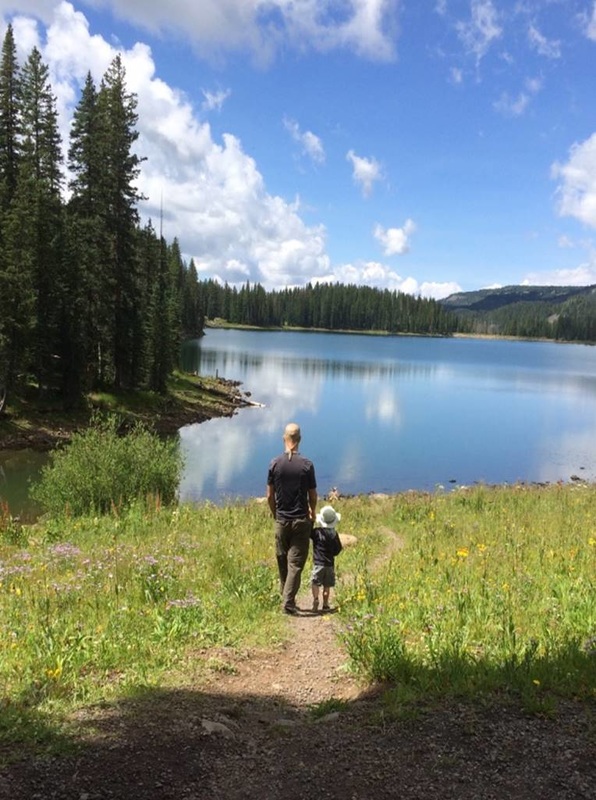
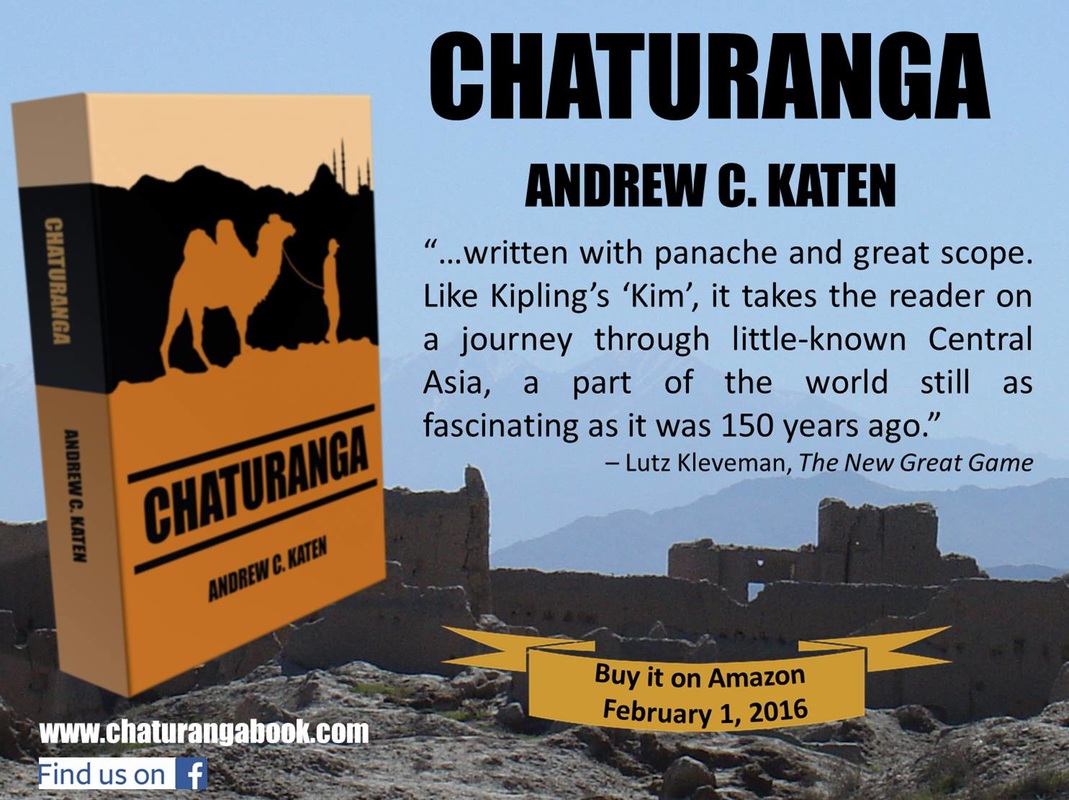
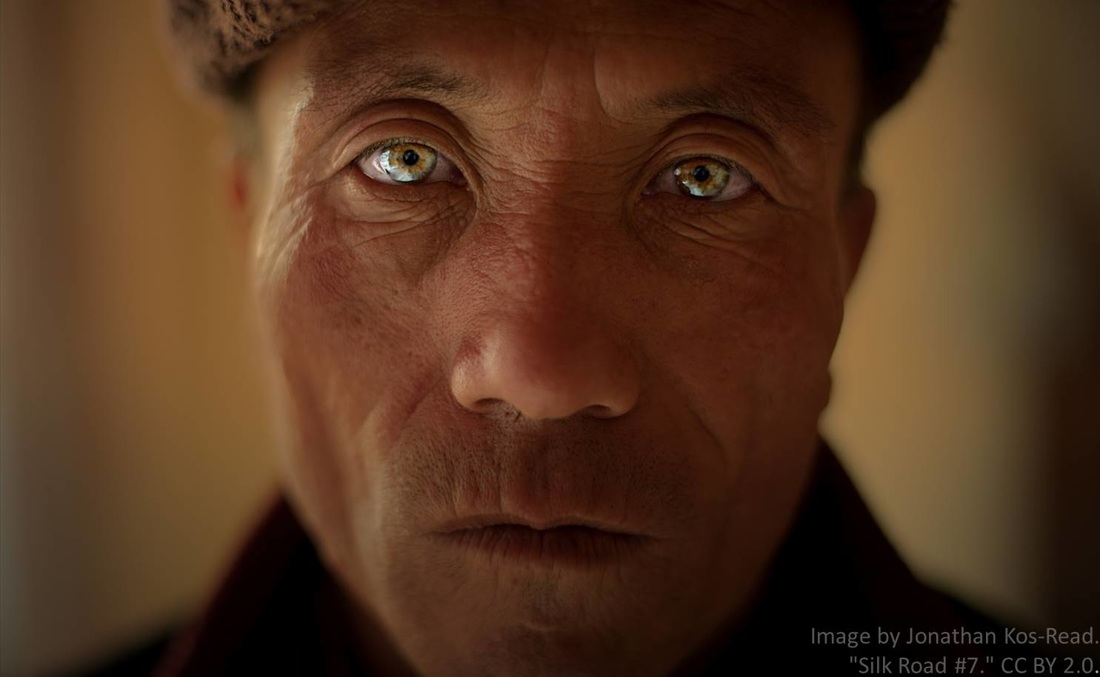
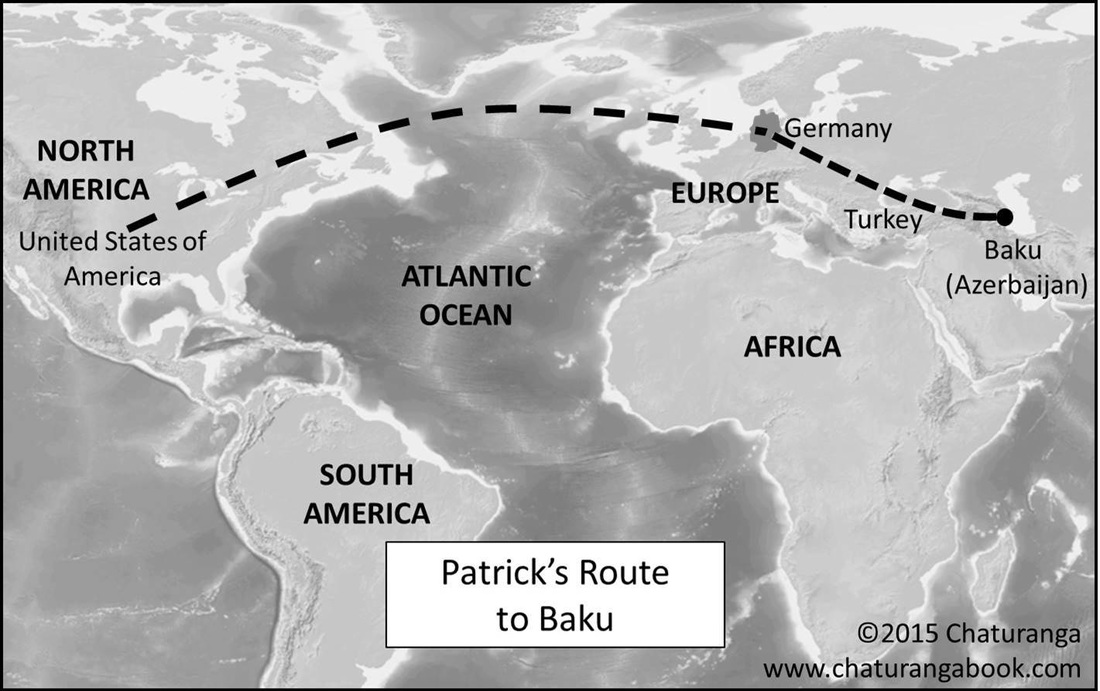
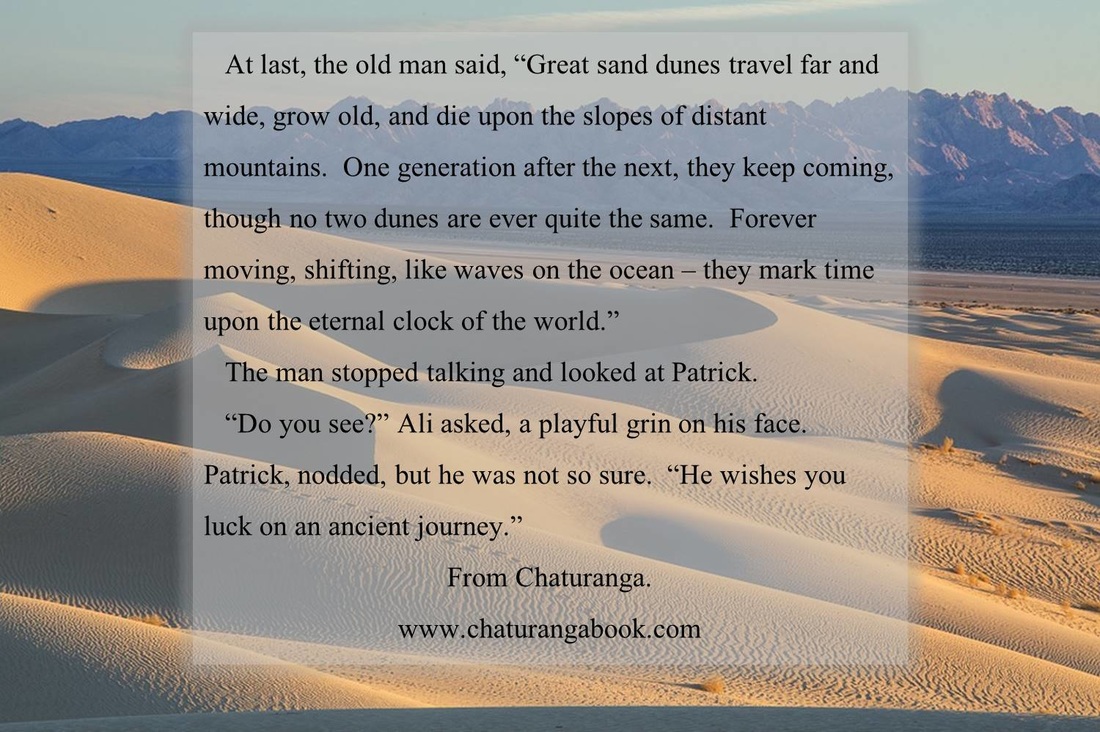
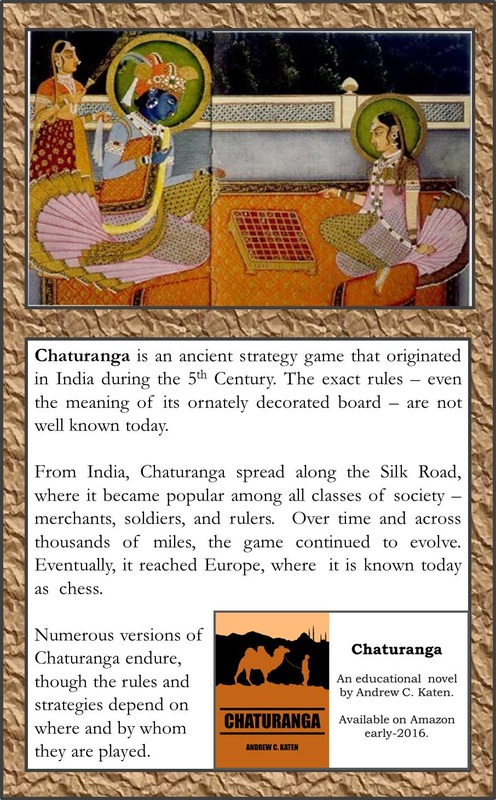
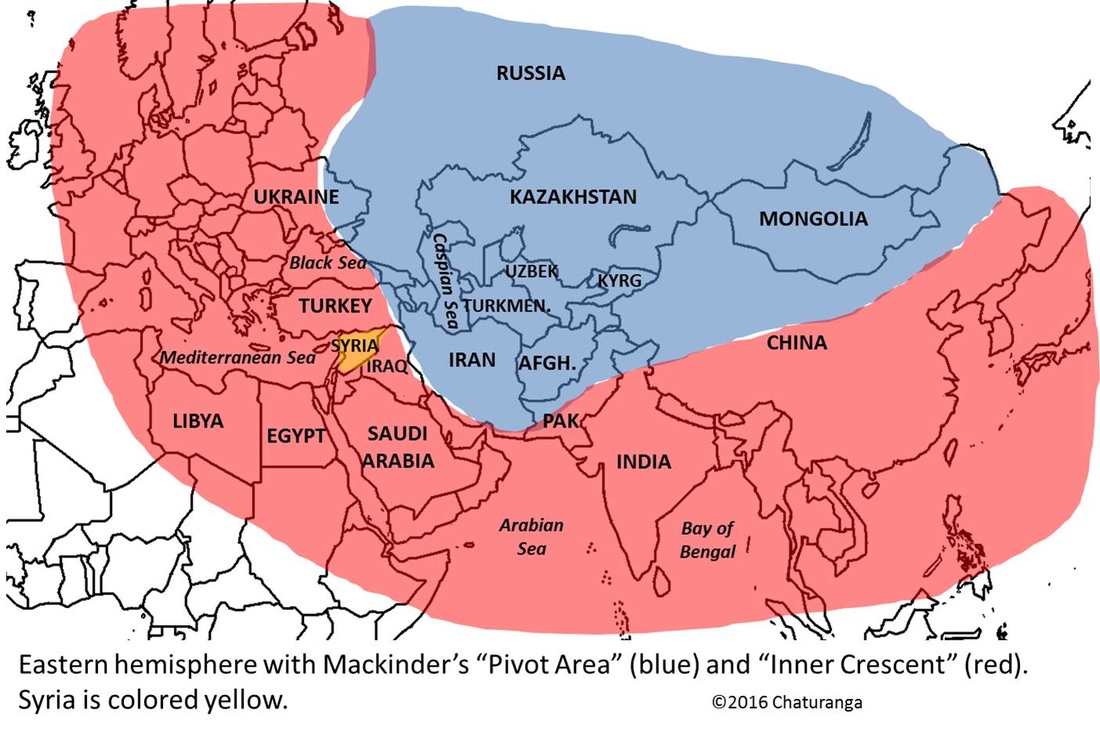
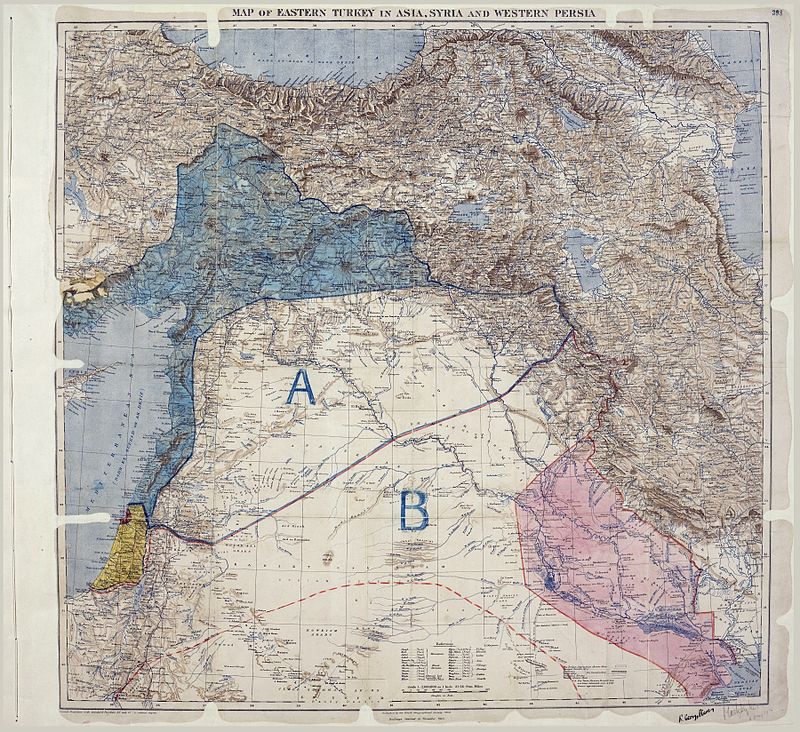
 RSS Feed
RSS Feed